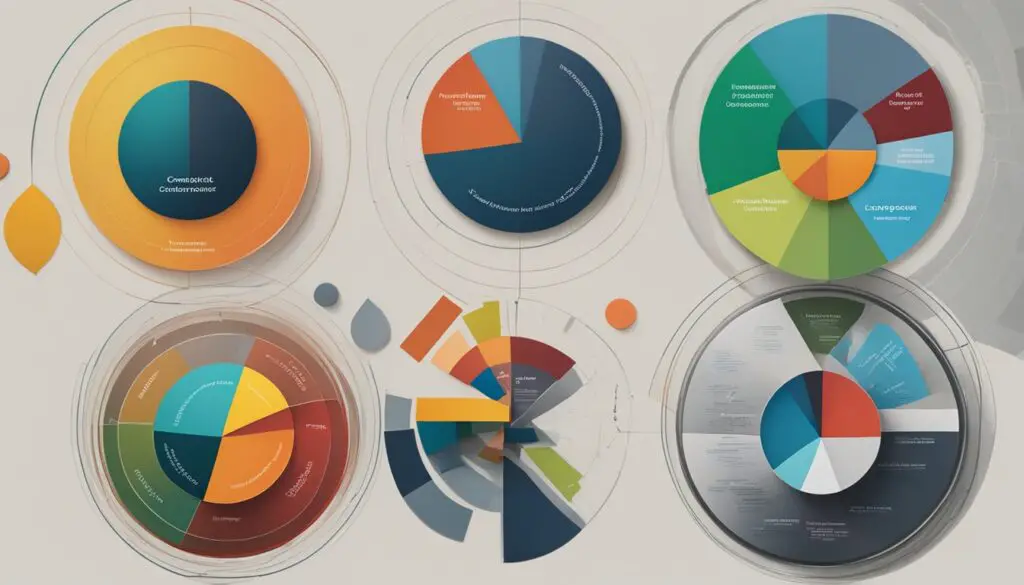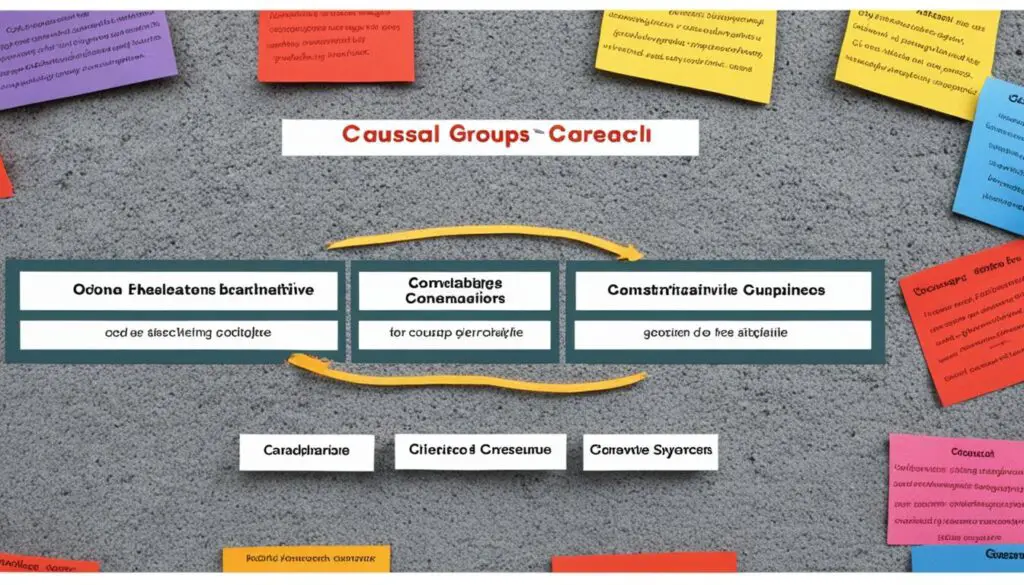Exploring Causal Comparative Research: Methods and Applications
Welcome to my article on causal comparative research. We’ll look into the methods and applications of this method. It’s a way to find out if one thing causes another. Researchers study the differences between groups to see possible causes.
Correlational research looks at how variables are related without group comparisons. Causal comparative research, on the other hand, compares groups. This helps see how independent variables might affect dependent variables. The research can look back in time (retrospective) or ahead to the future (prospective).
Key Takeaways:
- Causal comparative research looks at cause and effect between variables.
- It checks how the independent variable affects the dependent one by comparing groups.
- This research can study events from the past or causes with future effects.
- Applications include fields like education, sociology, and psychology.
Types of Causal Comparative Research
There are two main kinds of causal comparative research: retrospective and prospective. Each has different goals and methods. They help in studying cause and effect relationships.
Retrospective Comparative Research
This method looks at connections after the effects have happened. It checks if one thing really affects another. By looking at historical data, we can find out if there’s a link between variables.
For instance, in education, it might explore how different teaching methods influence grades. Researchers collect data from student groups that had varied teaching styles. This lets them compare the effects on their studies.
Prospective Comparative Research
This kind is more about studying what happens because of known conditions. While not as common, it’s very important for finding out why something might happen.
For example, in healthcare, this could study the outcomes of various patient treatment types. Participants are put in different treatment categories and observed. This allows the researchers to pinpoint the effect of one specific condition.
Both methods contribute to understanding causality. The choice between them depends on the research goal and available means. It also relies on how much control the researcher needs over the variables.

Comparing Retrospective and Prospective Comparative Research
| Characteristics | Retrospective Comparative Research | Prospective Comparative Research |
|---|---|---|
| Timing of Investigation | After the effects have occurred | Initiated by the researcher |
| Research Question | Investigating the influence of a specific variable on another variable | Evaluating the effects of a given condition |
| Data Collection | Examining historical data or past events | Gathering data through controlled experiments |
| Common Examples | Studying the impact of teaching methods on academic performance | Analyzing the effects of different treatment regimens on patient outcomes |
| Control over Variables | Minimal control over the independent variable | Full control over the independent variable |
| Advantages | Utilizes existing data, provides insights into historical events | Allows for controlled experiments, offers greater control over variables |
| Disadvantages | Limited control over variables, potential confounding factors | Requires more resources, may be influenced by researcher bias |
Both retrospective and prospective research are important. They help us learn more about how things are connected. It’s key to pick the right one based on the study’s needs and goals.
Advantages and Disadvantages of Causal Comparative Research
Causal comparative research helps researchers by looking at different groups and finding out what makes them different. This way, they can learn more about what causes certain things to happen. However, it comes with its own set of challenges that can affect how reliable the findings are. Let’s take a closer look at these pros and cons.
The Advantages of Causal Comparative Research
- Efficiency: This type of research saves time and effort since it uses data that’s already out there. This is great for rare groups or those hard to reach. Instead of starting from scratch, researchers can dive into already available data.
- Identification of Causes: It’s great at figuring out what might be behind a certain outcome. By looking at different groups, researchers can find out if one thing is leading to another. This could give us clues about why some things happen the way they do.
- Scrutiny of Relationships: Causal comparative research is all about digging deep into how different factors are related. It helps researchers see if and how one thing changes when another does. This kind of careful look can reveal important patterns and connections.
The Disadvantages of Causal Comparative Research
- Lack of Control over the Independent Variable: A big issue here is that researchers can’t directly change some key elements. This can make it hard to be sure about cause and effect. They have to be very careful not to overlook other possible reasons for what they find.
- Potential Research Bias: Research can also be skewed because of how groups, factors, and data are chosen and handled. Avoiding bias takes a lot of mindful work by the researchers. They need to be alert to the ways bias can creep in and work to keep it out of their findings.
- Possibility of Losing Subjects: It might be hard to always find or keep track of everyone you need to study. Losing access to groups can affect the usefulness of the research for others. This means the researcher needs to think about how well their sample represents the bigger group involved.
Causal comparative research is valuable, even with its challenges. Knowing its limits and working to prevent bias can make this method very effective. Researchers can improve their studies and add to our knowledge by using this approach wisely.
Now that we’ve seen the good and the not-so-good of causal comparative research, let’s move on to the conclusion. Here, we’ll wrap up what we’ve learned and why it matters.

Conclusion
Causal comparative research is a key method. It lets researchers look at effects between different groups. They can find important insights and possible cause-and-effect links. This method is special because it doesn’t directly change the variables studied.
But, there are some limits to this type of research. It’s hard to say something causes another, because of things we can’t control. So, when researchers see a link between things, they should be careful. It may not mean one thing definitely makes another happen.
Still, this research is vital for many researchers. Knowing how to use it can help them learn more. They can add to what we know about how things relate to each other. This helps grow our knowledge of cause-and-effect in different areas.
